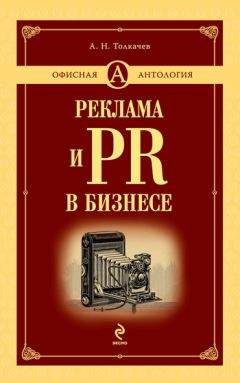Ричард Харрис - Психология массовых коммуникаций

Скачивание начинается... Если скачивание не началось автоматически, пожалуйста нажмите на эту ссылку.
Жалоба
Напишите нам, и мы в срочном порядке примем меры.
Описание книги "Психология массовых коммуникаций"
Описание и краткое содержание "Психология массовых коммуникаций" читать бесплатно онлайн.
«Предупреждён – значит вооружён». Такой эпиграф мог бы открывать эту книгу. И не имеет значения, кто возьмёт её в руки. Специалист почерпнёт в ней новые приёмы и подходы к анализу стратегии и тактики СМИ. Любознательный обыватель научится обеспечивать собственную информационную безопасность.
Кроме того картина информационного ландшафта современного общества от предвыборного управления массовым сознанием до рекламы памперсов оказывается настолько захватывающей, что однажды начав читать эту книгу, вы уже не оставите её недочитанной.
Linz, D., Malamuth, N. (1993). Pornography. Newbury Park, CA: Sage.
Linz, D., Turner, C. W, Hesse. B. W, Penrod, S. D. (1984). Bases of liability for injuries produced by media portrayals of violent pornography. In: N. M. Malamuth E. Donnerstein (Eds.). Pornography and sexual aggression (p. 277–304). Orlando, FL: Academic Press.
Loftus, E. F, Burns, Т . Е . (1982). Mental shock can produce retrograde amnesia. Memory Cognition, 10, 318–323.
"Lolita in Japan". (1997, April 6). Manhattan Mercury, p. A7.
Long, D. L., Graesser, A. C. (1988). Wit and humor in discourse processing. Discourse Processes, 11, 35–60.
Longford, L. (Ed.). (1972). Pornography: The Longford Report. London: Coronet.
Longmore, P. K. (1985, Summer). Screening stereotypes: Images of disabled people. Social Policy, p. 31–37.
Lovaas, O. L. (1961). Effect of exposure to symbolic aggression on aggressive behavior. Child Development, 32, 37–44.
Lovdahl, L. T. (1989). Sex role messages in television commercials: An update. Sex Roles. 21, 715–724.
Lowery, S., DeFleur, M. L. (1983). Milestones in mass communication research. New York: Longman. Lowry, D. T, Love, G., Kirby. M. (1981). Sex on the soap operas: Patterns of intimacy. Journal of Communication, 31, 90–96.
Lowry. D. T, Towles. D. E. (1989). Soap opera portrayals of sex, contraception, and sexually transmitted diseases. Journal of Communication, 39(2), 76–83.
Loy, J. W., McPherson, B. D., Kenyon, G. (1978). Sport and social systems: A guide to the analysis, problems, and literature. Reading, MA: Addison-Wesley.
Lozano, E. (1992). The force of myth on popular narratives: The case of melodramatic serials. Communication Theory, 2, 207–220.
Luebke, B. (1989). Out of focus: Images of women and men in newspaper photographs. Sex Roles, 20(3/4), 121–133.
Luepker, R. V, Murray, D. M.. Jacobs, D. R., Jr., Mittelmank, M. В ., Bracht, N., Carlaw, R., Crow, R., Elmer. P., Finnegan, J., Folsom, A. R. (1994). Community education for cardiovascular disease prevention: Risk factor changes in the Minnesota Heart Health Program. American Journal of Public Health, 84, 1383–1393.
Luke, C. (1987). Television discourse and schema theory: Toward a cognitive model of information processing. In: M. E. Manley-Casimir C. Luke (Eds.). Children and television: A challenge for education (p. 76–107). New York: Praeger.
Lull, J. (Ed.). (1988). World families watch television. Newbury Park, CA: Sage.
Lyons, J. S., Anderson, R. L., Larson, D. B. (1994). A systematic review of the effects of aggressive and nonaggressive pornography. In: D. Zillmann, J. Bryant, A. C. Huston (Eds.). Media, family, and children: Social, scientific, psychodynamic, and clinical perspectives (p. 271–310). Hillsdale, NJ: Lawrence Eribaum Associates.
Macbeth, T. M. (1996). Indirect effects of television: Creativity, persistence, school achievement, and participation in other activities. In: T. M. Macbeth (Ed.). Tuning in to young viewers: Social science perspectives on television (p. 149–219). Thousand Oaks, CA: Sage.
MacFarland, D. T. (1990). Contemporary radio programming strategies. Hillsdale, NJ: Lawrence Eribaum Associates.
Madden, T. J., Weinberger, M. G. (1982). The effects of humor on attention in magazine advertising. Journal of Advertising. 11(3'). 8–14.
Madden. T. J., Weinberger, M. G. (1984). Humor in advertising: A practitioner view. Journal of Advertising Research, 24(4), 23–29.
Maibach, E., Flora, J. A. (1993). Symbolic modeling and cognitive rehearsal: Using video to promote AIDS prevention self-efficacy. Communication Research, 20, 517–545.
Maibach, E., Parrott, R. L. (1995). Designing health messages. Thousand Oaks, CA: Sage. Maier, S. (1994, January). India's awakening? World Press Review, p. 29.
Malamuth, N. M. (1981). Rape fantasies as a function of exposure to violent sexual stimuli. Archives of Sexual Behavior. 10, 33–47.
Malamuth, N. M. (1984). Aggression against women: Cultural and individual causes. In: N. M. Malamuth E. Donnerstein (Eds.). Pornography and sexual aggression (p. 19–52). Orlando, FL: Academic Press.
Malamuth, N. M., Check, J. V P. (1980 a). Penile tumescence and perceptual responses to rape as a function of victim's perceived reactions. Journal of Applied Social Psychology. 10 528–547.
Malamuth, N. M., Check, J. V. P. (1980 b). Sexual arousal to rape and consenting depictions: The importance of the woman's arousal. Journal of Abnormal Psychology, X9, 763–766.
Malamuth, N. M., Check, J. V. P (1983). Sexual arousal to rape depictions: Individual differences. Jour-nut of Abnormal Psychology, 92, 55–67.
Malamuth. N. M., Check. J. V. P., Briere, J. (1986). Sexual arousal in response to aggression: Ideological, aggressive, and sexual correlates. Journal of Personality and Social Psychology, 50, 330–340.
Malamuth. N. M.. Feshbach, S., Heim, M. (1980). Ethical issues and exposure to rape stimuli: A reply to Sherif. Journal of Personality and Social Psychology, 38, 413–415.
Malamuth, N. M., Haber, S.. Feshbach, S. (1980).« Testing hypotheses regarding rape: Exposure to sexual violence, sex differences, and the "normality" of rapists. Journal of Research in Personality, 14, 121–137.
Malamuth, N. M., Heim, M., Feshbach, S. (1980). Sexual responsiveness of college students to rape depictions: Inhibitory and disinhibitory effects. Journal of Personality and Social Psychology. ЗЯ , 399–408.
Malamuth, N. M., Spinner, B. (1980). A longitudinal content analysis of sexual violence in the best selling erotica magazines. Journal of Sex Research, 16, 226–237.
Mankiewicz, F., Swerdlow, J. (1978). Remote control: Television and the manipiilation of American life. New York: Ballantine.
Manley-Casimir, M. E., Luke, C. (Eds.). (1987). Children and television. A challenge for education. New York: Praeger.
Manrai, L. Л ., Gardner, M. P. (1992). Consumer processing of social ideas advertising: A conceptual model. Advances in Consumer Research, 19, 15–20.
Mares, M.-L. (1998). Children's use of VCRs. The Annals of the American Academy of Political and Social Science. 557, 120–131.
Marginalia. (1998, May 22). The Chronicle of Higher Education. 44 (37). p. A8.
Marquez de Melo, J. (1991. May). The presence of the Brazilian telenovelas in the internationalmarket: Case study of Globo network. Paper presented at meeting of the International Communication Association, Chicago, IL.
Martz, L. (1998, May). Defending the most basic freedom. World Press Review, p. 14–16.
Massing, H. H. (1987). Decoding "Dallas": Comparing American and German viewers. In: A. A. Berger (Ed.). Television in sociery (p. 96–103). New Brunswick, NJ: Transaction Books.
Masterman, L. (1985). Teaching the media. London: Comedia.
Matabane, P. W. (1988). Television and the black audience: Cultivating moderate perspectives on racial integration. Journal of Communication, 38(4), 21–31.
Matas, M., Guebaly, N , Harper, D., Green, M., Peterkin, A. (1986). Mental illness and the media: Part II. Content analysis of press coverage of mental health topics. Canadian Journal of Psychiatry, 31, 431–433.
Mattussek, M. (1995, April 3). Tuning in hate. Der Spiegel. (Reprinted in: World Press Review, June 1995, p. 26–27.)
McAlistcr, A. L., Puska, P., Salonen, J. T. (1982). Theory and action for health promotion: Illustrations from the North Karelia project. American Journal of Public Health, 72. 43–50.
McAnany, E. G. (1983). Television and crisis: Ten years of network news coverage of Central America, 1972–1981. Media, culture and society, 5(2), 199–212.
McCaulcy, C.. Thangavelu, K., Rozin. P. (1988). Sex stereotyping of occupations in relation to television representations and census facts. Basic and Applied Social Psychology, 9197–212.
McChesney, R. W. (1989). Media made sport: A history of sports coverage in the United States. In: L. A. Wenner (Ed.). Medici, sports, and society (p. 46–69). New-bury Park, CA: Sage.
McCombs, M. E. (1981). The agenda-setting approach. In: D. D. Nimmo K. R. Sanders (Eds.). Handbook ofpolitical communication (p. 121–140). Beverly Hills, CA: Sage.
McCombs, M. E. (1994). News influence on our pictures of the world. In: J. Bryant and D. Zillmann (Eds.). Media effects: Advances in theory and research (p. 1–16). Hillsdate, NJ: Lawrence Eribaum Associates.
McCombs. M. E., Gilbert, S. (1986). News influence on our pictures of the world. In: J. Bryant D. Zillmann (Eds.). Perspectives on media effects (p. 1–15). Hillsdale. NJ: Lawrence Eribaum Associates.
McCombs, M. E., Shaw, D. L. (1993). The evolution of agenda-setting research: Twenty-five years in the marketplace of ideas. Journal of Communication, 43(2), 58–67.
McCombs, M. E., Shaw, D. L., Weaver, D. (Eds.). (1997). Communication and democracy: Exploring the intellectual/rentiers in agenda-setting theory. Mahwah, NJ: Lawrence Eribaum Associates.
McDermott, S., Greenberg. B. (1985). Parents, peers, and television as determinants of black children's esteem. In: R. Bostrom (Ed.). Communication yearbook 8. Beverly Hills, CA: Sage.
McGhee, P. (1979). Humor: Its origin and development. San Francisco: Freeman.
McGuire, W. J. (1974). Psychological motives and communication gratification. In: J. G. Blumler E. Katz (Eds.). The uses of mass communications: Current perspectives on gratifications research (p. 167–196). Beverly Hills, CA: Sage.
McGuire, W. J. (1985 a). Attitudes and attitude change. In: G. Lindzey E. Aronson (Eds.). Handbook of social psychology (3rd ed.). Reading, MA: Addison-Wesley.
McGuire, W. J. (1985 b). The myth of massive media impact: Savagings and salvagings. In: G. Comstock (Ed.). Public communication and behavior (Vol. I). New York: Academic Press.
McJntyre, P., Hosch, H. M., Harris, R. J., Norvell, D. W. (1986). Effects of sex and attitudes toward women on the processing of television commercials. Psychology and Marketing. 3, 181–190.
McKenzie-Mohr, D., Zanna, M. R (1990). Treating women as sexual objects: Look to the (gender schematic) male who has viewed pornography. Personality and Social Psychology Bulletin, 16, 296–308.
McNeal, J. U. (1987). Children as consumers: Insights and implications. Lexington MA: Lexington Books. McNeal, J. U. (1990). From savers to spenders: How children became a consumer market. Media Values 52, 4–6.
Meadowcroft, J. M., Reeves, B. (1989). Influence of story schema development on children's attention to television. Communication Research, 16, 352–374.
Melton, G., Fowler, G. (I987). Female roles in radio advertising. Journalism Quarterly, 64(l), I45–I49.
Mendelsohn, H. A. (1966). Election-day broadcasts and terminal voting decisions. Public Opinion Quarterly, 30, 212–225.
Mendelsohn, H. A., O'Keefe, G. J. (1976). The people choose a President: Influences on voter decision making. New York: Praeger.
Merikle, P. M. (I988). Subliminal auditory messages: An evaluation. Psychology Marketing, 5, 355–372.
Merikle, P. M., Cheesman, J. (I987). Current status of research on subliminal advertising. Advances in Consumer Research, 14 298–302.
Merikle, P. M., Skanes, H. E. (1992). Subliminal self-help audiotapes: A search for placebo effects. Journal of Applied Psychology, 77, 772–776.
Meringoff. L. K. (1980). Influence of the medium on children's story apprehension. Journal of Educational Psychology. 72, 240–249.
Meringoff. L. K., Vibbert, M. M., Char, C. A., Fernie, D. E., Banker. G. S., Gardner, H. (1983). In: J. Bryant D. R. Anderson (Eds.). Children's understanding of television (p. 151–179). New York: Academic Press.
Merritt. S. (1984). Negative political advertising: Some empirical findings. Journal of Advertising. 13. 27–38.
Mesmer, T. Baskind, I., Lerdau. E. (1998, October). Reflecting on an alliance. /4mericas, 50(5), 52–55.
Messaris, R (1994). Visual "literacy": Image, mind, and reality. Boulder. CO: Westview Press.
Messaris. R (I997). Visual persuasion: The role of images in advertising. Thousand Oaks, CA: Sage.
Messaris, P. (1998). Visual aspects of media literacy. Journal of Communication, 4!?(I), 70–80.
Messner, M. A., Duncan, M. C., Jensen, K. (1993). Separating the men from the girls: The gendered language of televised sports. Gender Society, 7, 121–137.
Meyer. P. (1990). News media responsive ness to public health. In: C. Atkin L. Wallack (Eds.). Mass communication and public health: Complexities and conflicts (p. 52–57). Newbury Park, CA: Sage.
Meyrowitz, J. (1985). No sense of plate: The impact of electronic media on social behavior. New York: Oxford University Press.
Meyrowitz. J. (1998). Multiple media literacies. Journal of Communication, 48(1). 96–108.
Mieike, K. W., Chen, M. (1983). Formative research for 3–2–1 Contact: Methods and insights. In: M. J. A. Howe (Ed.). Learning from television: Psychological and educational research (p. 31–55). London: Academic Press.
Milavsky, J. R., Kessler. R., Stipp, H., Rubens, W. (1982). Television and aggression: Results of a panel study. In: D. Pearl, L. Bouthilet, J. Lazar (Eds.). Television and behavior: Ten yean of scientific progress and implications for the eighties (Vol. 2, p. 138–157). Washington, DC: U. S. Government Printing Office.
Moisy. C. (1997, Summer). Myths of the global information village. Foreign Policy, p. 78–87.
Moore, D. L., Hausknecht, D., Thamodaran, K. (1986). Time compression, response opportunity, and persuasion. Journal of Consumer Research, 13, 85–99.
Moore, Т . Е . (1982). What you see is what you get. Journal of Marketing, 46(2), 38–47.
Moore, T. E. (1988). The case against subliminal manipulation. Psychology Marketing, 5, 297–316.
Morgan, M. (1982). Television and adolescents' sex-role stereotypes: A longitudinal study. Journal of Personality and Social Psychology, 43(5), 947–955.
Morgan, M. (1989). Television and democracy. In: I. Angus S. Jhally (Eds.). Cultural politics in contemporary America (p. 240–253). New York: Routledgc.
Morgan, M. (1990). International cultivation analysis. In: N. Signorielli M. Morgan (Eds.). Cultivation analysis: New directions in media effects research (p. 225–247). Newbury Park, CA: Sage.
Morgan, M., Gerbner, G. (1982). TV professions and adolescent career choices. In: M. Schwarz (Ed.). TV and teens: Experts look at the issues (p. 121–126). Reading, MA: Addison-Wesley.
Morgan, M., Shanahan, J. (1991). Television and the cultivation of political attitudes in Argentina. Journal of Communication, 41(1). 88–103.
Morgan, M., Shanahan, J. (1992). Comparative cultivation analysis: Television and adolescents in Argentina and Taiwan. In: F. Korzenny S. Ting-Toomey (Eds.). Mass media effects across cultures (p. 173–197). Newbury Park. CA: Sage.
Morgan, M., Shanahan, J. (1995). Democracy tango: Television, adolescents, and authoritarian tensions in Argentina. Cresskill, NJ: Hampton Press.
Morgan, M., Signorielli, N. (1990). Cultivation analysis: Conceptualization and methodology. In: N. Signorielh M. Morgan (Eds.). Cultivation analysis: New directions in media effects research (p. 13–34). Newbury Park, CA: Sage.
Подписывайтесь на наши страницы в социальных сетях.
Будьте в курсе последних книжных новинок, комментируйте, обсуждайте. Мы ждём Вас!
Похожие книги на "Психология массовых коммуникаций"
Книги похожие на "Психология массовых коммуникаций" читать онлайн или скачать бесплатно полные версии.
Мы рекомендуем Вам зарегистрироваться либо войти на сайт под своим именем.
Отзывы о "Ричард Харрис - Психология массовых коммуникаций"
Отзывы читателей о книге "Психология массовых коммуникаций", комментарии и мнения людей о произведении.
























